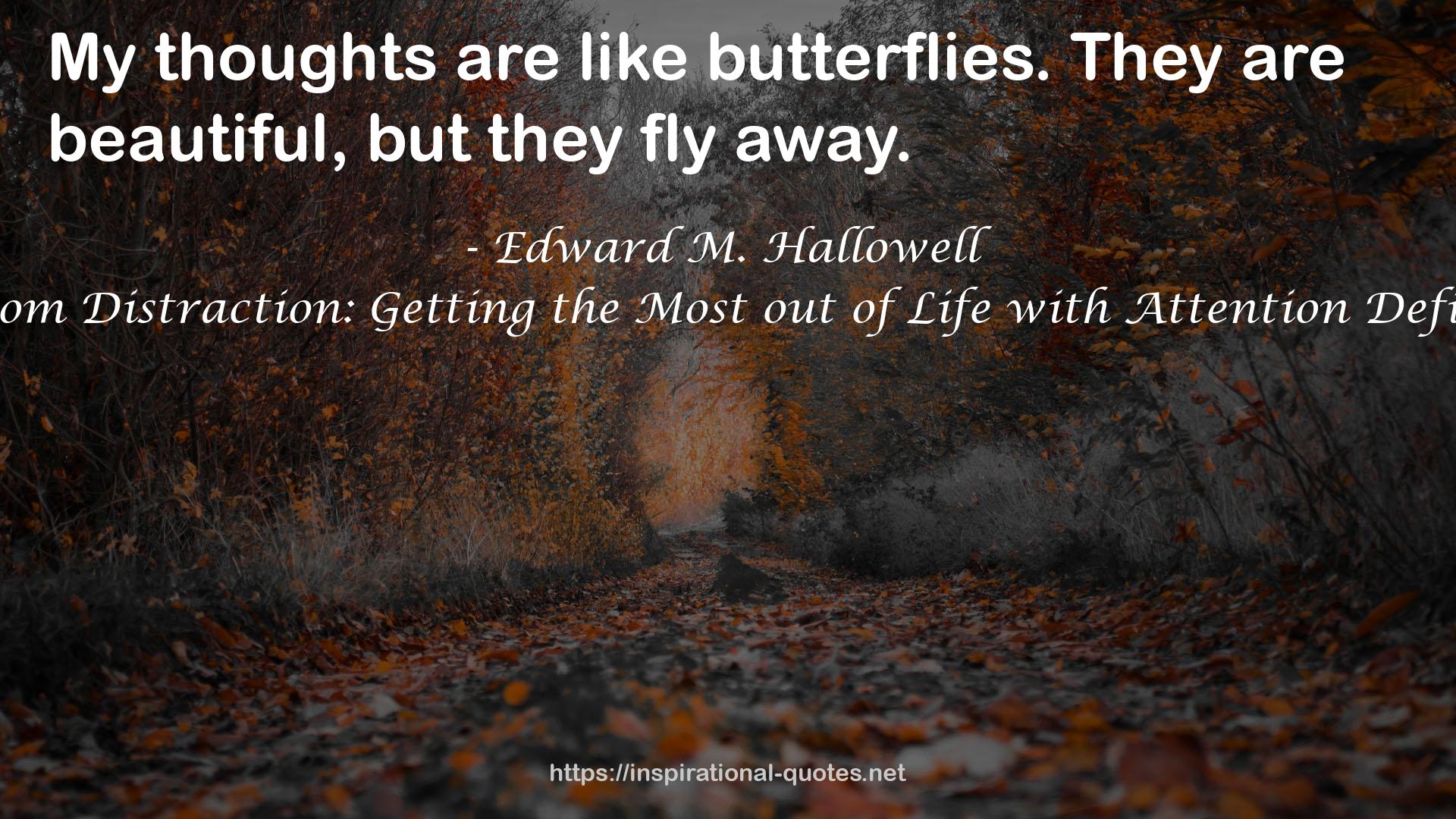17
" The ingredients of the mélange may include: • high mental and physical energy (coupled with extreme lassitude at times) • a fast-moving, easily distracted mind (coupled with an amazingly superfocused mind at times) • trouble with remembering, planning, and anticipating • unpredictability and impulsivity • creativity • lack of inhibition as compared to others • disorganization (coupled with remarkable organizational skills in certain domains) • a tendency toward procrastination (coupled with an I-must-do-it-or-have-it-now attitude at times) • a high-intensity attitude alternating with a foggy one • forgetfulness (coupled with an extraordinary recall of certain often irrelevant remote information) • passionate interests (coupled with an inability to arouse interest at other times) • an original, often zany way of looking at the world • irritability (coupled with tenderheartedness) • a tendency to drink too much alcohol, smoke cigarettes, use other drugs, or get involved with addictive activities such as gambling, shopping, spending, sex, food, and the Internet (coupled with a tendency to abstain altogether at times) • a tendency to worry unnecessarily (coupled with a tendency not to worry enough when worry is warranted) • a tendency to be a nonconformist or a maverick • a tendency to reject help from others (coupled with a tendency to want to give help to others) • generosity that can go too far • a tendency to repeat the same mistake many times without learning from it • a tendency to underestimate the time it takes to complete a task or get to a destination • various other ingredients, none of which dominates all the time, and any one of which may be absent in a single individual "
― Edward M. Hallowell , Delivered from Distraction: Getting the Most out of Life with Attention Deficit Disorder

